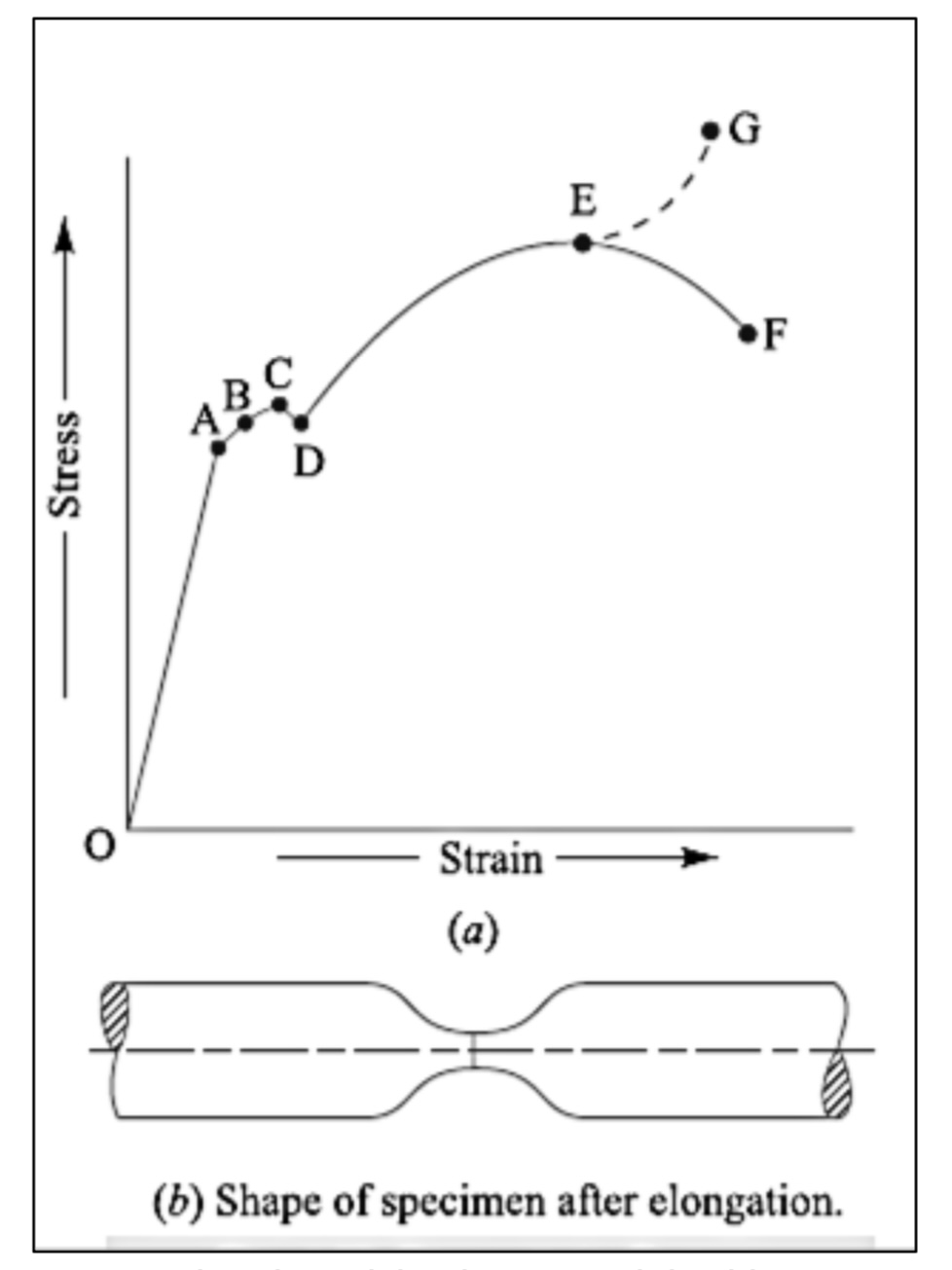Stress-Strain Diagram
1/4
There's no tags or description
Looks like no tags are added yet.
Name | Mastery | Learn | Test | Matching | Spaced |
|---|
No study sessions yet.
5 Terms
Proportional Limit
diagram that from point O to A is a straight line, which represents that the stress is proportional to strain. Beyond point A, the curve slightly deviates from the straight line.
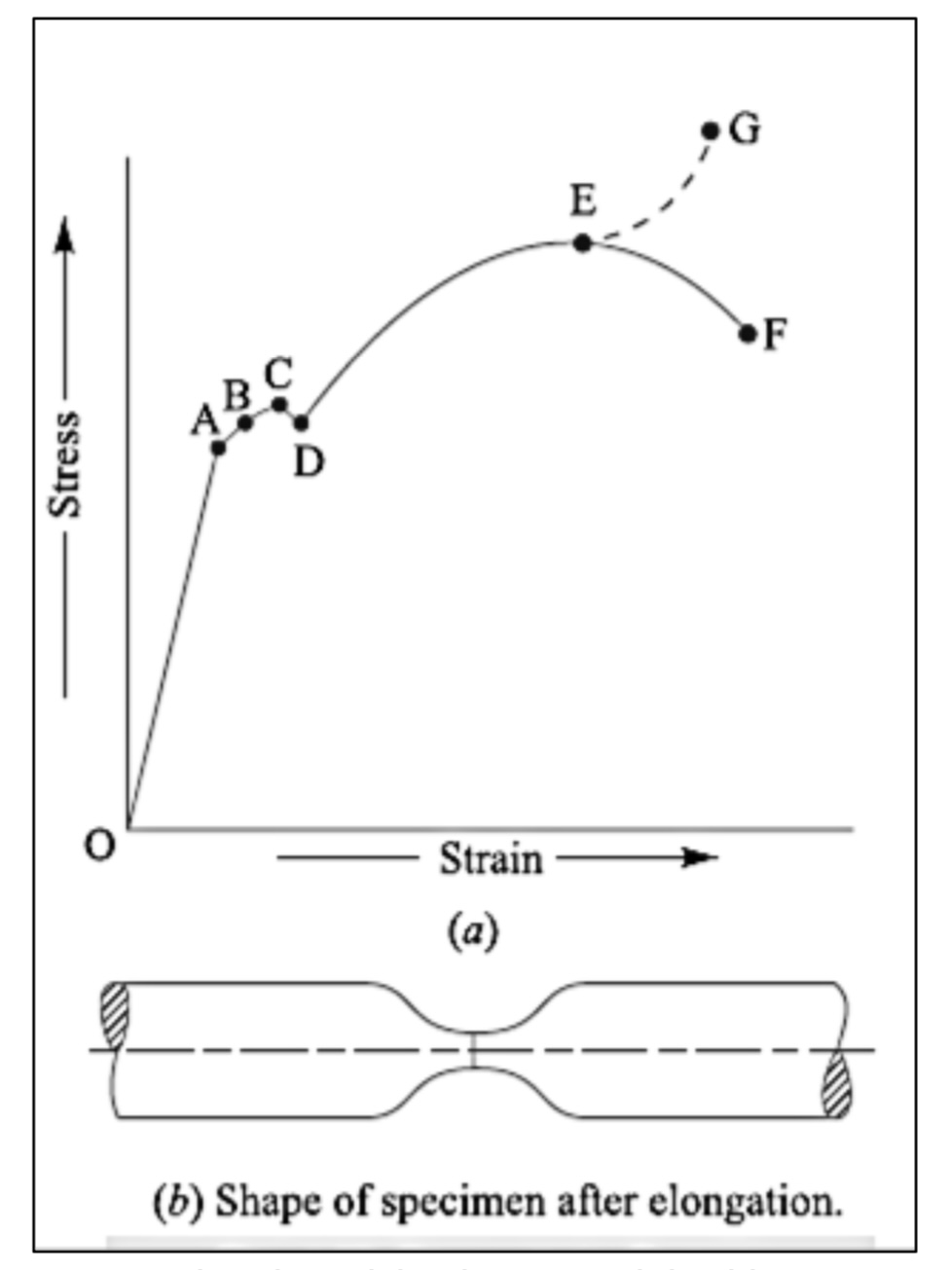
Elastic Limit
may be noted that even if the load is increased beyond point A up to the point B, the material will regain its shape and size when the load is removed. This means that the material has elastic properties up to the point B. This point is known as
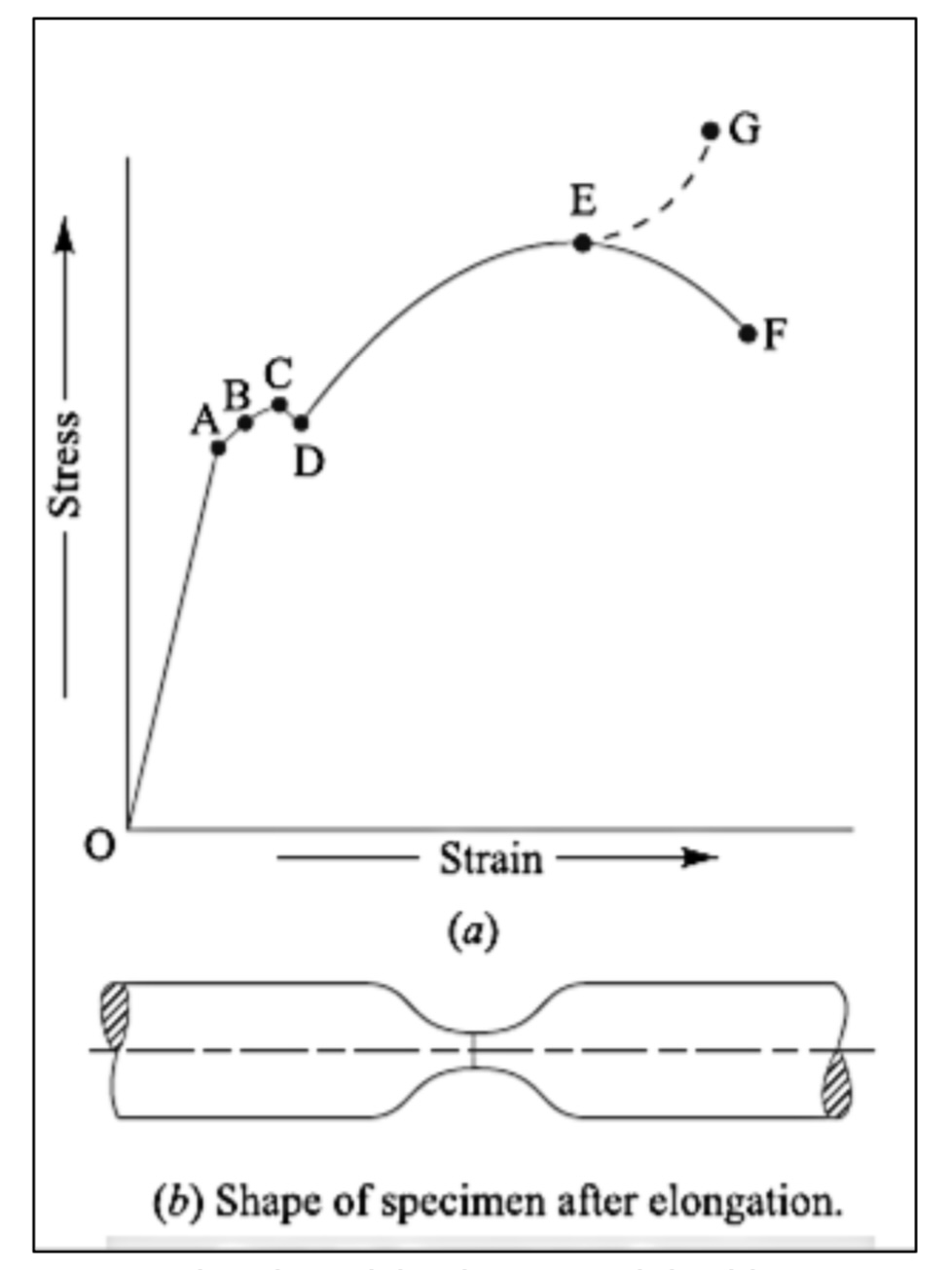
Yield Point
If the material is stressed beyond point B, the plastic stage will reach on the removal of the load, the material will not be able to recover its original size and shape. A little consideration will show that beyond point B, the strain increases at a faster rate with any increase in the stress until the point C is reached. At this point, the material yields before the load and there is an appreciable strain without any increase in stress.
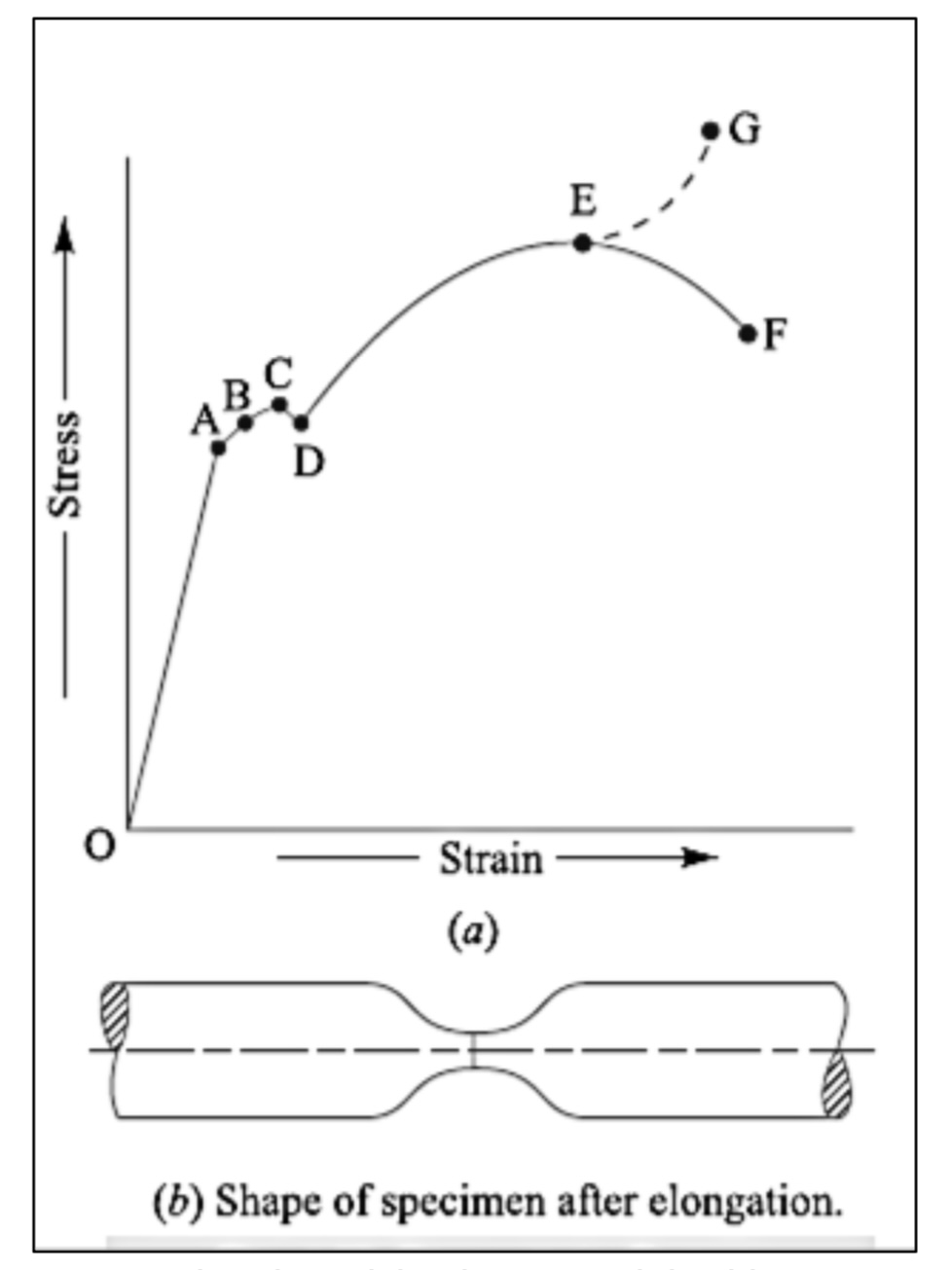
Ultimate Stress (Su)
At D, the specimen regains some strength and higher values of stresses are required for higher strains, than those between A and D. The stress (or load) goes on increasing till the point E is reached. The gradual increase in the strain (or length) of the specimen is followed with the uniform reduction of its cross-sectional area.
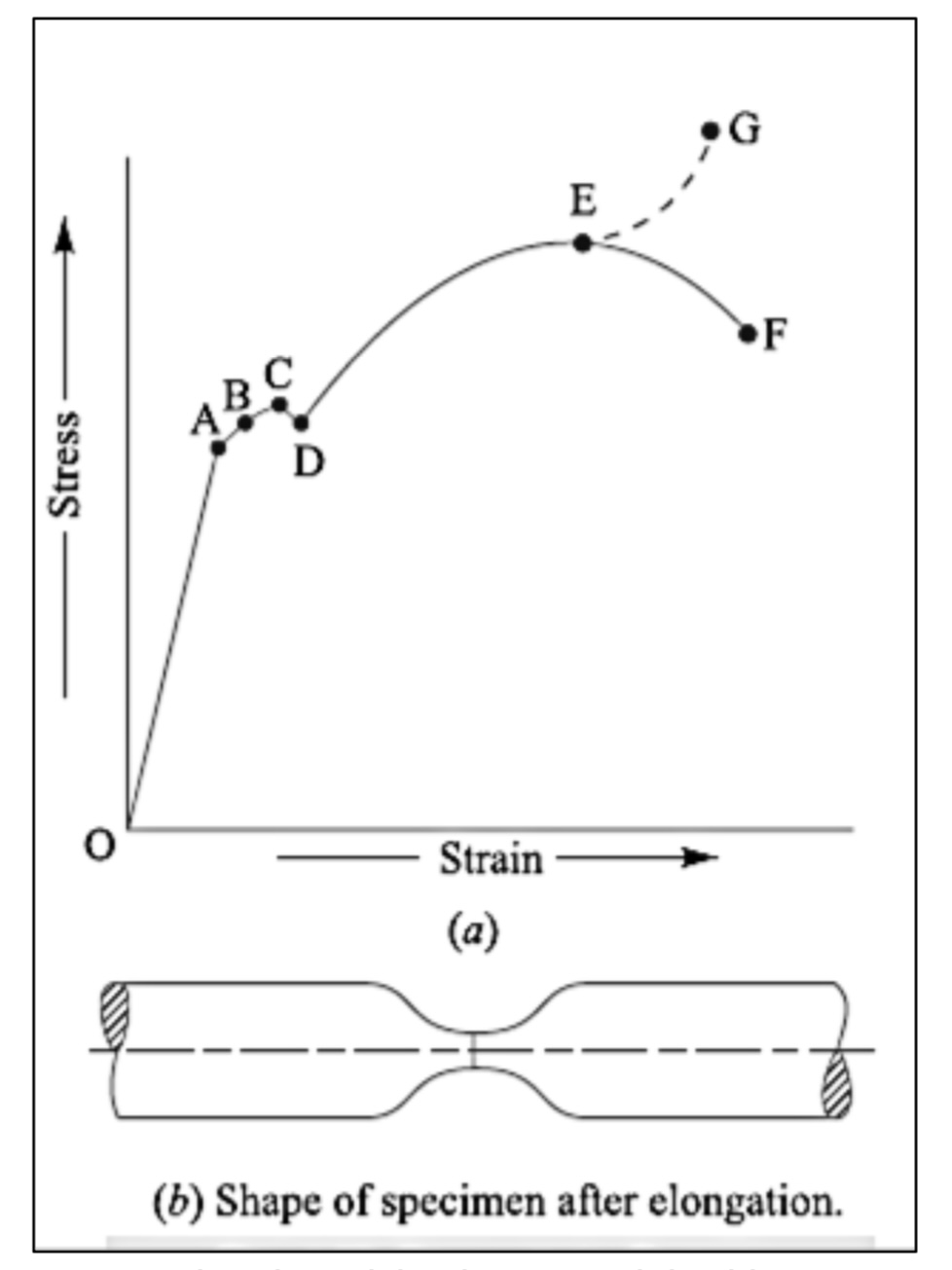
Breaking Stress
After the specimen has reached the ultimate stress, a neck is formed, which decreases the cross-sectional area of the specimen. A little consideration will show that the stress (or load) necessary to break away the specimen, is less than the maximum stress. The stress is, therefore, reduced until the specimen breaks away at point F. The stress corresponding to point F is known
